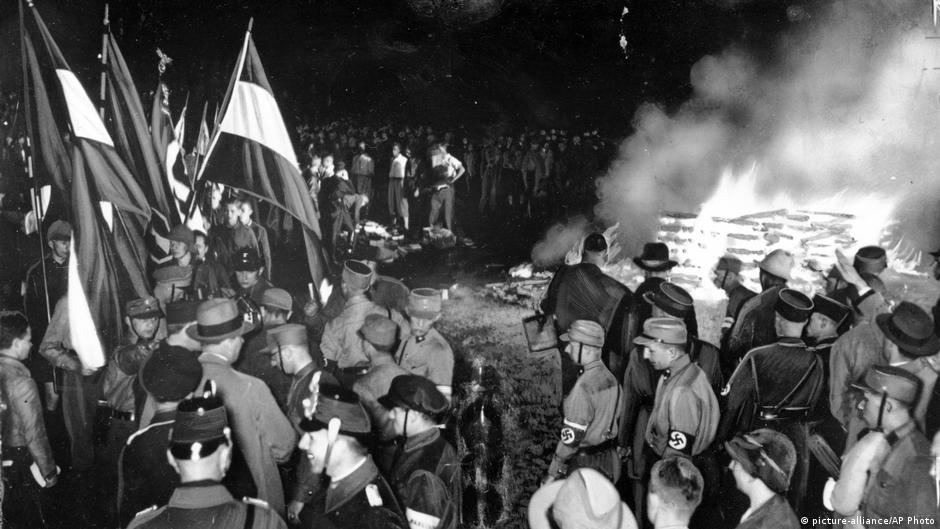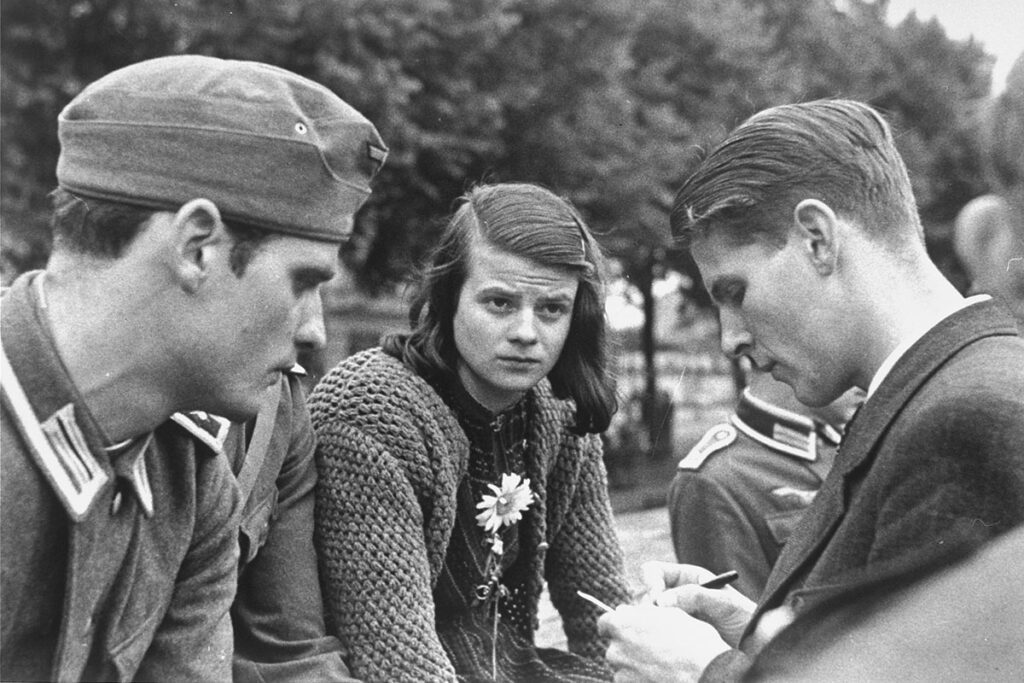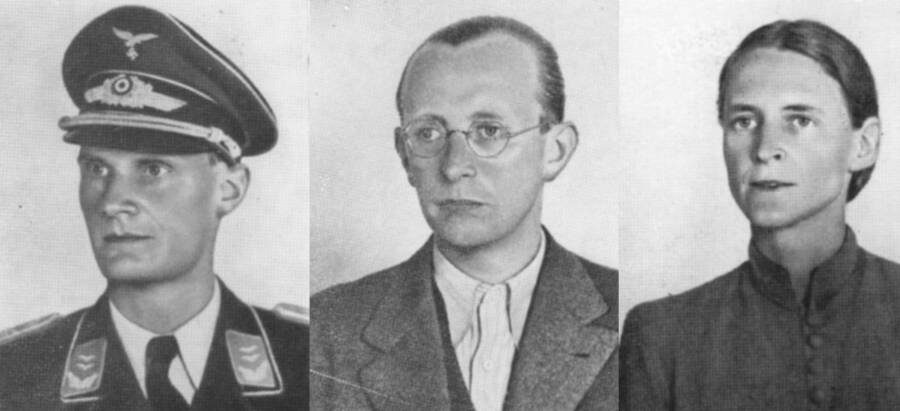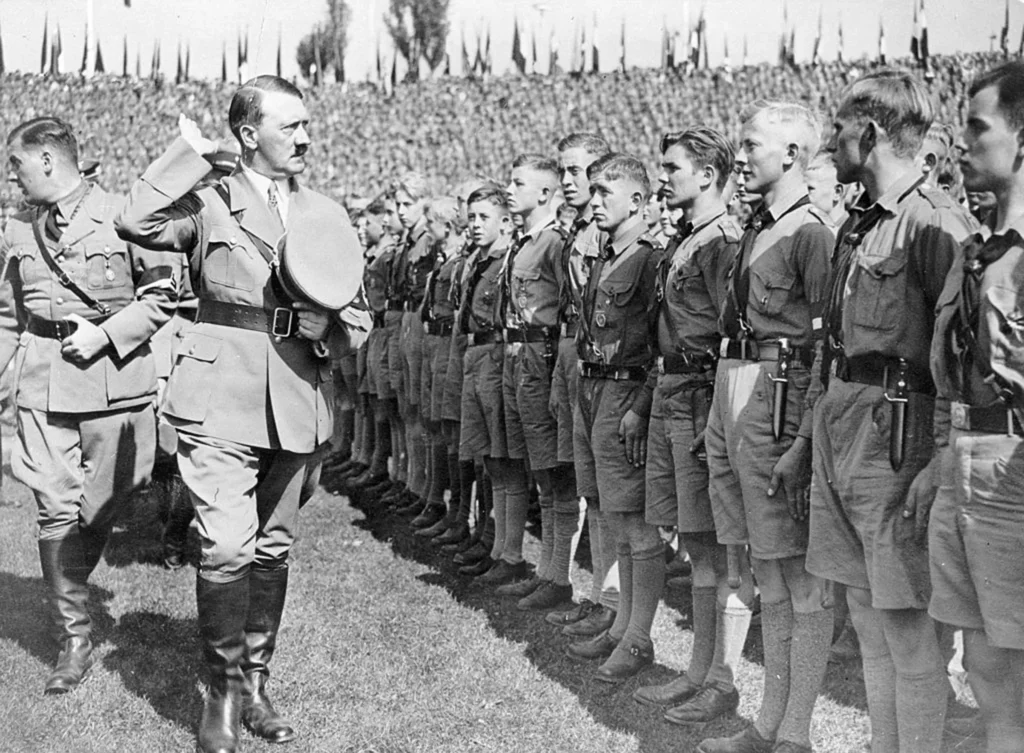This week’s #ForgottenFriday explores ways German citizens resisted Nazi rule.
Disclaimer: This article features graphic descriptions of execution.
May marks 91 years since the mass burning of anti-Nazi books throughout Germany. Enthusiastic crowds witnessed the burning of books that went against the Nazi ethos, the majority of which were books by intellectual thinkers with Jewish heritage like Albert Einstein, Freud, and Brecht. The largest burning occurred in Berlin where Propaganda Minister, Joseph Goebbels declared that “Jewish intellectualism is dead”.

Life in Nazi Germany
Many German people supported Adolf Hitler’s rise to power in 1933, with the promise of a brighter future delivered through the policies of the National Socialist Party. Hitler’s regime promised to restore Germany’s international prestige through rearmament and eroded the restrictions imposed by the Treaty of Versailles after the First World War. Nazi Germany was a totalitarian state which meant that all aspects of German citizens’ lives were dictated by the government. The Ministry of Enlightenment and Propaganda ensured that the German people idolised and obeyed Hitler. This was achieved through censoring the press to only print stories in favour of the Nazi regime, images of Hitler distributed everywhere, and the organisation of mass rallies which confirmed overwhelming Nazi support. Anyone who stood against the beliefs of the government were persecuted severely and were forced into concentration camps or executed.
Despite national efforts to indoctrinate the German population into blind submission, individual action and the formation of underground resistance groups worked to undermine the Nazi regime and help its victims. Their actions came at great risk and many of them lost their lives fighting for what they believed in.

Resistance Groups
Die Weiße Rose (The White Rose) was a resistance movement, formed by students from the University of Munich in June 1942. The movement was headed by siblings, Hans (24), and Sophie (21) Scholl who both studied at the university. Although initial supporters of Hitler, their opinions of the Nazi Party hardened by the time Hitler invaded Poland in 1939. The group resisted Nazi policy by distributing anti-Nazi leaflets and painting slogans like “Freedom!” and “Down With Hitler!” on walls of the university. Through these overt activities, the group hoped to instil civil disobedience and undermine Nazi propaganda. In February 1943, Hans and Sophie were caught distributing leaflets, arrested, and sentenced to death by beheading.
On the morning of her execution, Sophie said:
“Such a fine, sunny day, and I have to go… What does my death matter, if through us, thousands of people are awakened and stirred to action?

Clandestine Groups
People opposed Nazi control by setting up clandestine networks of dissent. Die Rote Kapelle (The Red Orchestra) was the name given to a network of anti-fascist groups in Europe. They disseminated anti-Nazi pamphlets, aided the persecuted, and documented the Nazi party’s crimes of violence. Notable resistance fighters included Arvid Harnack, a senior civil servant in the Reich Ministry of the Economy, and his wife Mildred, and Harro Schulze-Boysen a Reich Aviation Ministry employee and his wife Libertas. The two men met at Abendgymnasium (night school) and started a secret political faction that later developed into an espionage network that supplied intelligence to the Soviet Union. They hoped to end Hitler’s dictatorship by assisting the Soviet Union in defeating Germany and worked as Soviet agents. For example, the group reported intelligence on ‘Operation Barbarossa’ which was the Nazi invasion of the Soviet Union; efforts which may have contributed to Germany’s military failings during this operation.
The Gestapo (Nazis’ secret police force) discovered the organisation in 1942 and on 7th September Arvid and his wife, Mildred, were arrested. Arvid was sentenced to death on 19th December after a four-day trial before the Reichskriegsgericht (Reich Military Tribunal) and was put to death three days later at Plötzensee Prison in Berlin. He and his co-conspirators were hanged from meat hooks by piano wire while Mildred was beheaded by guillotine. Harro and Libertas were executed in December of the same year. In total, more than fifty members of the Red Orchestra were hanged or beheaded in Plötzensee prison.

Youth Groups
Children also opposed Nazi rule with the most famous youth opposition group being the Edelweiss Piraten (Edelweiss Pirates), based in the Rhineland. They grew from the German Youth movement and resisted against Hitler Youth by spreading anti-Nazi slogans and singing pre-1933 folk songs. Hitler Youth was a way for the Nazi Party to ensure loyalty to Hitler and taught children about the party’s aims. 90 per cent of children were enrolled in either Hitler Youth for boys or the League of German Girls during the height of Hitler’s regime.
It is difficult to know how popular the Nazi administration was as the government made it very difficult to express opposition and Nazi propaganda portrayed the Führer as his people’s saviour. Despite this, we know that people acted against the regime and stood up to what they believed in, under the threat of abduction and execution. Although many of these people were discovered and silenced, their bravery saved lives and brought hope to people during a time of great uncertainty.



